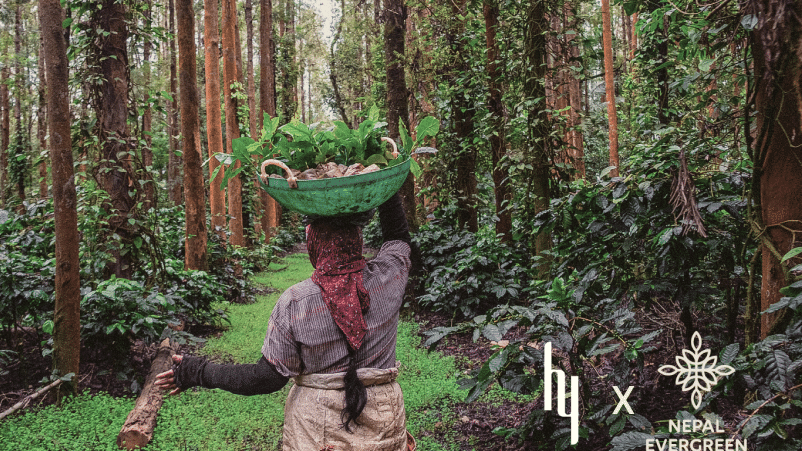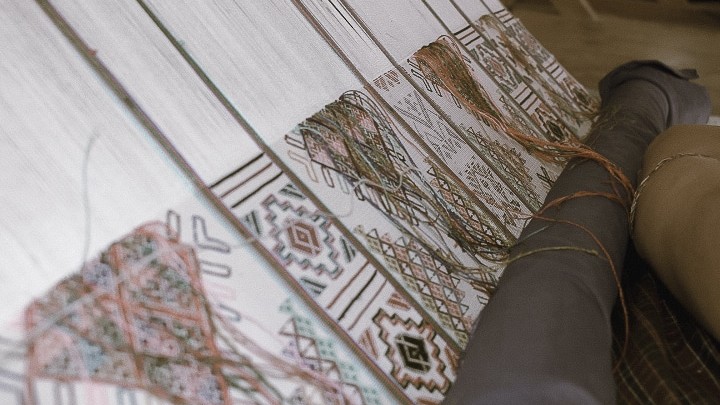From tree bark to Nepalese Lamali Paper Making
Our ancestors communicated with one another by carving drawings and symbols onto cave walls, tree bark, and clay tablets — but everything changed with the invention of paper. About 2,000 years ago, a Chinese court official named Ts’ai Lun produced the first piece of paper in the city of Lei-Yang. He made pulp by mashing mulberry bark, hemp, and rags then laying the mixture out in the sun to dry. The craft of papermaking gradually traveled across Asia, the Middle East, Europe, and the Americas. Although the general process for producing paper is the same, cultures around the world have used different fibers and developed unique paper-making techniques; Lamali paper of Nepal is no exception.
Lamali paper is made by hand in the mountain regions of Nepal. Historically, paper makers were concentrated in rural regions and most notably in the Baglung District, in Nepal’s Gandaki province. Paper makers use the inner bark of the indigenous lokta bush, a name that encompasses both Daphne Cannabina and Daphne Papyracea. Lokta bushes are evergreen shrubs with white flowers that flourish on the slopes of Himalayan forests. The bush grows at elevations between 1,600 – 4,000 m (5,250 – 13,000 feet) and can reach a height of 5 meters (15 feet). The lokta bush produces strong fibers that make it the perfect source material for paper.

An Ancient Art Form Revived
Lamali paper is known for its durability. In fact, a well-produced piece of Lamali paper can last for up to 3,500 years. In addition, Lamali paper is naturally resistant to tearing, humidity, mildew, and insects. It has been the paper of choice for the purposes of sacred texts and government documents alike. The oldest surviving sample of Lamali paper, now held at Nepal’s National Archives in Kathmandu, is estimated to be between 1,000-1,900 years old. The document is a sacred Buddhist text known as the Karanya Buha sutra and it is written in Lichchhavi script.
The tradition of handmade Lamali paper declined in the 1930s with the introduction of imported paper products from Tibet. In the 1960s, mass-produced paper products from India pushed the local Nepalese paper-making industry into further decline. At one point, only a handful of families in the Baglung and Parbat districts continued producing paper by hand and preserving these age-old techniques. A resurgence in Nepalese paper-making took place in the 1970s as tourism increased and a national wildlife conservation program was established to support the development of local forest-based industries.
Further efforts to revive the practice unfolded throughout the 1980s and 1990s. The United Nations Children’s Fund (UNICEF) partnered with the Agricultural Development Bank of Nepal and Small Farmer Development Program to launch the Community Development and Health Project (CDHP). This project was dedicated to reinvigorating Nepal’s traditional paper-making processes.
Though the practice dates back to ancient times, paper making remains a key source of revenue for the people of rural areas. Today, paper is made in more than 20 districts throughout Nepal. Finished paper products are predominantly sold in the Kathmandu Valley and Janakpur.

Making Lamali Paper
The art of producing Lamali paper by hand involves several steps. First, lokta bark must be harvested from high-altitude forests of the Himalayas and thoroughly dried. The bark is cooked in an ash solution to soften it, washed in water, and cut into small pieces. The lokta bark is then cooked and rinsed a second time. The small pieces are crushed on a large flat rock and water is added to create a fine paste. The paste is poured on a flat screen and semi-immersed in water. The paste is evened out with a gentle shake before the screen and pulp are removed from the water and laid in the sun. Once fully dry, the paper is ready for use as paper or materials for other consumer products.
Lamali Paper’s Positive Footprint
The Lokta bush is said to be one of the most underutilized plants on the planet. It is a fast-growing plant that can regenerate to its fully grown size, up to 4 or 5 meters, within just 5 to 7 years. Thus, the lokta bush offers a renewable and sustainable material.
In addition to being sustainable from an environmental standpoint, Lamali paper making also offers a sustainable source of employment for women who live in rural areas. Supporting the Lamali paper industry plays a role in providing the women of Nepalese hill tribes with consistent work, enabling them to support their families while upholding an important cultural tradition.
While Lamali paper was mainly used for government records and religious scrolls, it has many modern uses. Recognized today as both a functional and artisanal material, Lamali paper is made in infinite colors for myriad uses including prayer flags, book covers and bindings, restaurant menus, wallpaper, packaging, clothing, and origami. Should you find yourself traveling through Nepal, be sure to keep an eye out for local products made of durable, beautiful Lamali paper.
The Life and Legacy of Alexandra David-Néel
In 1924, Alexandra David-Néel made history as one of the first Western women to secretly enter Tibet. Disguised as a beggar, she crossed into Lhasa, bringing the mysteries of Tibetan Buddhism to the West.
Earth Day – Our Environmental Initiatives
Since 2023, HIMA JOMO has been steadfast in our pledge to plant a tree in the Himalayas for every perfume purchase made, join us in building a lush forest in the heart of the Himalayas with Nepal Evergreen.
The Travelling Jacket
In 2016, five designers from across South Asia came together to create what is now known as the traveling jacket.
The Himalayan Cedar
This majestic tree has captivated the hearts of explorers, poets, and nature enthusiasts for centuries with its enchanting presence, aromatic fragrance, and enduring qualities that make it a symbol of strength and grace.
Earth Day with a Himalayan Kingdom
Earth Day, a cherished moment that comes each year on April twenty-second, is a worldwide communion of hearts, minds, and hands, united in a shared reverence for our planet's splendour.
The blue poppy of the Himalayas
A flower that lives in the seclusion of the nature that surrounds her. Simply known as blue poppy but its colour speaks silent poetry.
Khoma, the Sound of Weaving
A collective thumping sound echoes in the village of Khoma with the wake-up call from their local roasters.
Discover Ladakh: The Land of High Passes
India is known globally for its vibrant and bustling megacities but in its northern reaches lie the mountains and valleys of Ladakh, a name that means land of high passes.
Five Millenia of Asian Art at Paris’ Musée Guimet
Works of art that have survived the test of time offer us clues about the history and culture of past generations and civilisations.
The Power of a Thangka Painting
Thangkas are a distinctly Tibetan form of art centred around religious figures and symbols.











